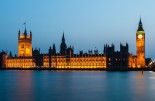Monex Europe: ECB, Fed, BoE rate decisions previews

The team of Simon Harvey, Head of FX Analysis at Monex Europe, has published its previews for the upcoming central banks decisions:
European Central Bank
For the BoE and ECB, a downshift to 50 bps is widely expected, meaning the market reaction will likely depend on the corresponding communications and forward guidance. In the Bank of England’s case, it is likely that they will continue to push back on market pricing for 2023 while continuing to cast a bleak economic projection for the next twelve months.
The challenge for the ECB is much more difficult, however. The recent string of stronger than expected activity data suggests that the ECB may need to cast a more hawkish tone, while risks to headline inflation are likely to migrate towards H2 2023’s inflation projection when Europe competes with a striving Chinese economy to refill its energy inventories.
Additionally, the ECB also needs to provide guidance on how they wish to shrink their balance sheet We think the most likely option for them is to passively allow the Asset Purchase Programme to roll off, beginning as early as Q2 2023. […] Data since the ECB’s last meeting in October has shown a partial improvement in inflation conditions and a much more robust eurozone economy in Q3 than initially expected. […]
While the economic data will play into the hawk's hands, ultimately, the doves will likely have a greater basis to launch some resistance as a 50bps hike would see rates rise to the upper bound of the ECB’s estimated neutral range, a reason in itself for more caution. Given communications recently have largely guided towards a 50bp hike too, the decision by the ECB is unlikely to be the primary focus for markets.
Instead, the updated staff projections and the ECB’s decision on how it aims to wind down its Asset Purchase Programme will be the area where economists focus their attention.
Bank of England
The Bank of England hasn’t had a smooth journey over the past few months and that is unlikely to change with this week’s interest rate decision. As things stand, we think consensus is fairly well aligned, although there are some risks that the BoE will hike by a second consecutive 75bps to 3.75% as inflation expectations have drifted higher and next week’s inflation data could show uncomfortably high levels of core inflation.
Should the BoE meet expectations and hike to 3.5% the market impact will be driven by the MPC’s assessment of economic conditions and the voting split as that will provide the bulk of the forward guidance for Q1’s rate profile.
Federal Reserve
The Federal Reserve is widely expected to hike the Federal funds target range by 50 bps to 4.25-4.5% at next week’s meeting, as officials have repeatedly guided expectations to a slowdown in the pace of their hiking cycle. Recent inflation data has reaffirmed the Fed’s messaging to markets as it provided the central bank cover to act less aggressively to keep inflation expectations anchored.
While November’s CPI report is set to be released just the day before the Fed concludes its two-day meeting and announces its policy decision, we think any signal in that data will largely impact the Fed’s next decision in February and their revised Summary of Economic Projections at this meeting as opposed to impacting the near term rate decision due to the strength of their recent guidance
Should the pace of sequential core inflation rebound, as it has done in the past two instances following a weak MoM print the month prior, we expect the Fed’s median dot for 2023 to be revised “somewhat higher” towards 5%.
In the event that November’s inflation data compounds the disinflationary signals of the previous report, the Fed won’t take too much comfort in this as wage pressures suggest that underlying core inflation rates may still be above the level consistent with their 2% inflation target. For this reason, we expect them to still signal a preference to take rates further into restrictive territory, albeit at a more cautious rate in Q1 2023 under this scenario.









